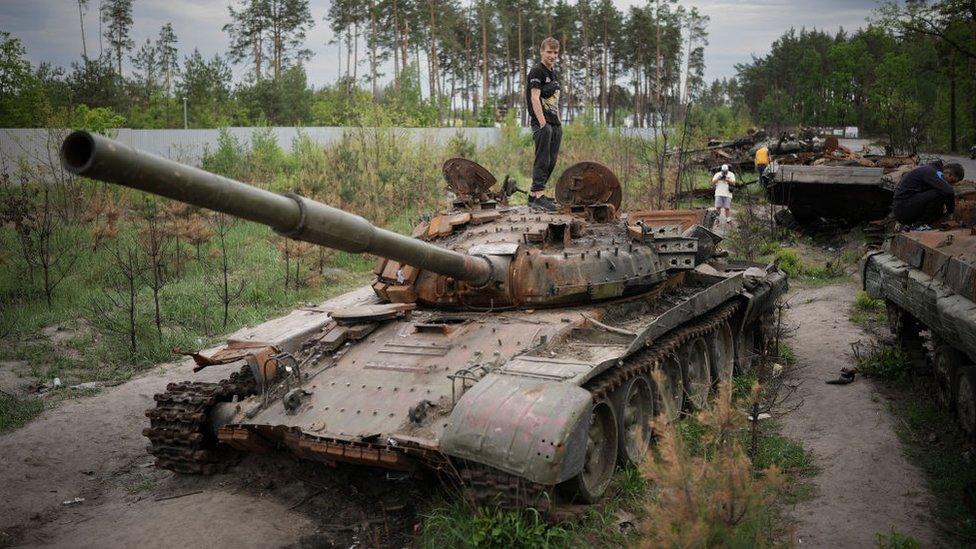Ukraine-Russia: Hidden tech war as Slovyansk battle looms
- Published
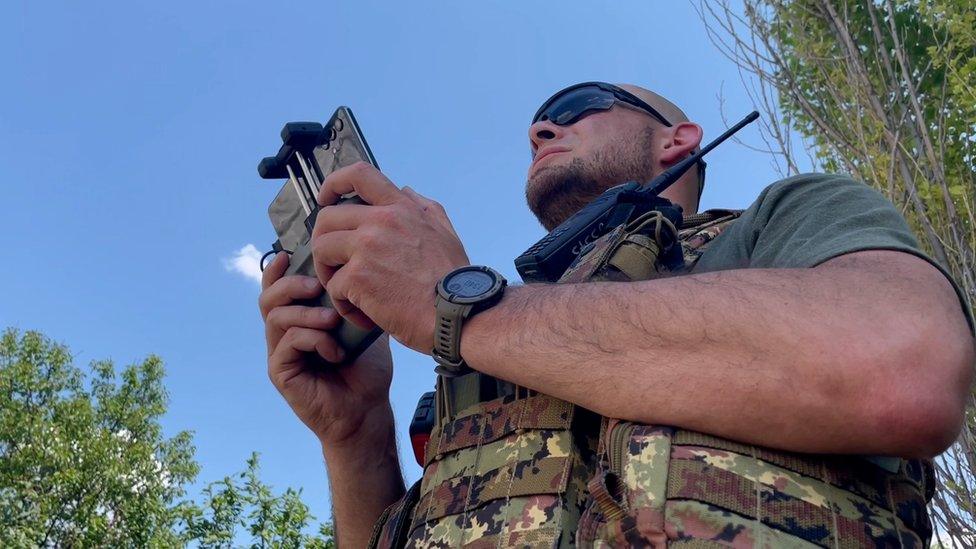
Ukraine's Dnipro 1 Battalion is preparing to defend the key eastern city of Slovyansk
"Right now, we have two big battles," says Dmytro Podvorchanskyi, a soldier with Ukraine's Dnipro 1 Battalion. "The first is an artillery battle," he says, "the second is a battle of technologies".
Dmytro is fighting that second, largely unseen war. He leads a unit of just 10 soldiers who form Dnipro 1's drone intelligence unit. Dmytro says he prefers to call it "IT guys who fight". All of them are volunteers. Most of them have a background in information technology, and knew each other before the war started.
On a mobile phone one of the team shows us drone footage of the Russian targets they've already destroyed - their "greatest hits".
Dmytro lists them: "One tank, three or four artillery guns, two mortar positions and five or six ammunition dumps."
"Good results for just 10 people," he says, before breaking into a smile. They've already been fighting in Rubizhne and Severodonetsk - cities captured by the Russians. Now they're getting ready to defend Slovyansk.

Slovyansk has come under repeated bombardment this week from Russia's advancing forces
"I think Slovyansk will be the next big target for Russia," says one of his team. I ask whether he thinks they'll be able to halt the Russian advance. "Sure," he says.
Drones or Unmanned Aerial Vehicles (UAVs) have been used widely in other wars, but not on this scale. They're key weapons for both Russia and Ukraine. Both sides have larger military drones - like Russia's Orlan-10 or Ukraine's famous Bayraktar, a Turkish-made drone. They're often more expensive and complex and can be easier to target and shoot down.
The most ubiquitous drones in this battle are commercial drones, the kind you or I can buy off the shelf. They're also cheap and easy to replace.
Both sides are using them to spot the enemy's positions and then help direct and correct their own artillery fire on a target. But these small drones are also being fitted with explosives.
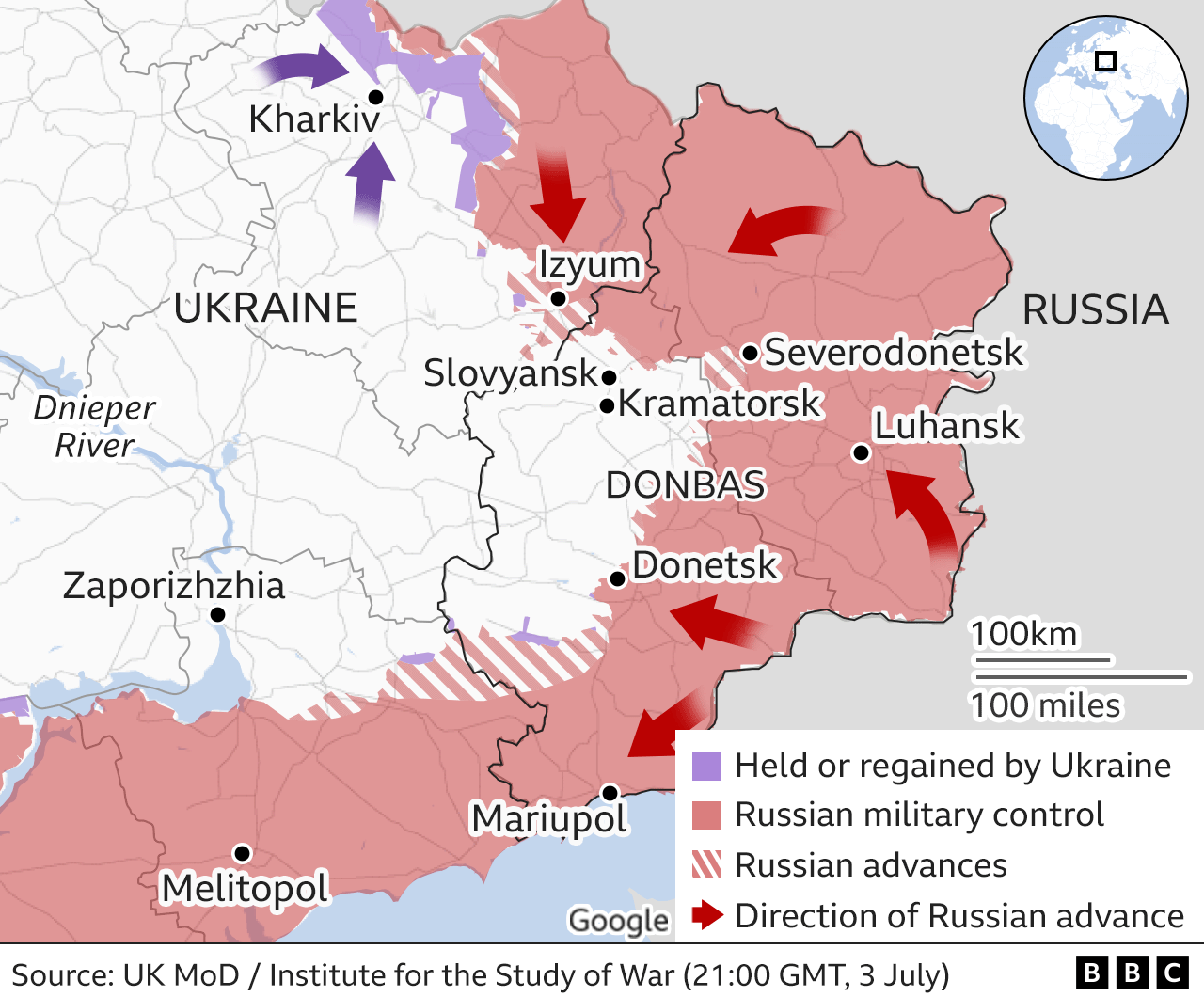

Behind the frontlines, near Slovyansk, a team of soldiers from the drone intelligence unit show us how they deploy them.
They unpack the small, hand-held, DJI mavik, from a box and carefully fit a small explosive to it. Small commercial drones can carry munitions of between 200g and 500g (7-17oz). A larger one can carry a charge of up to 800g. They build the bombs at a workshop back at their base using a 3D printer to make the fins, to help the bomb glide to its target.
Dmytro says it's a job for his "smartest guys". They also study open source intelligence and track communications.
But as we watch the team prepare to launch the drone near Slovyansk, there's a reminder this can also be a very dangerous game of hide-and-seek. The troops hear the sound of an aircraft in the distance. They tell us to take cover under some trees. Both sides are looking out for each other's drones and their operators. Luckily, this time, it turns out to be a Ukrainian helicopter.
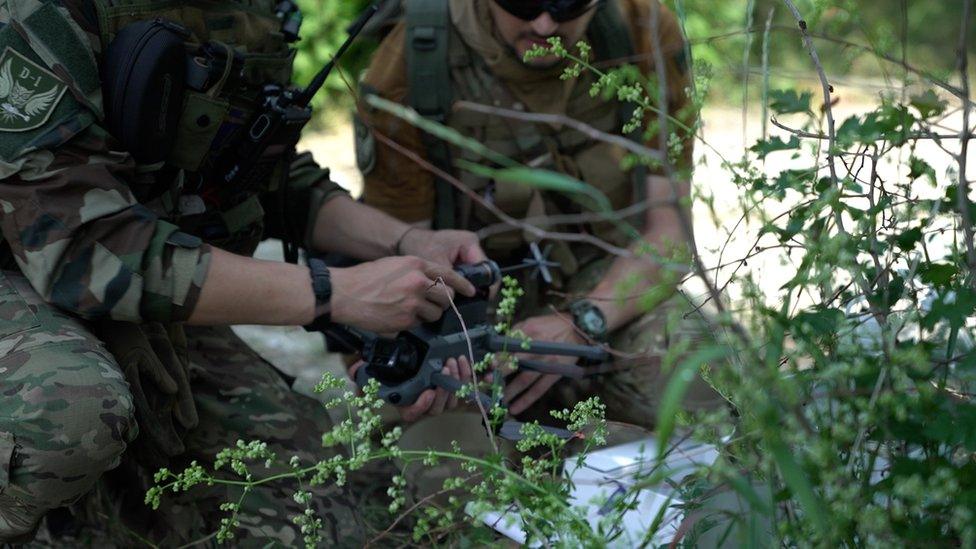
Small commercial drones are playing a vital part in the war
In the early days of the war, they tell me Russia was able to use "Aeroscope" - a drone-detection platform that can identify UAV communication links in real time. It meant Russian forces could quickly find the location of the drone and its pilot.
The Ukrainian soldier operating the drone says they've now learnt how to block it, but he adds the Russians still "have a lot of stuff for blocking the drones and blocking our signal". So far they've lost about five of these small commercial drones.
Russia not only outguns and outnumbers Ukraine's forces but it has plenty of experience in electronic warfare too. Russia has been blocking and jamming Ukraine's military communication systems.

War in Ukraine: More coverage

A recent report by UK think tank Rusi highlighted it as a challenge Ukraine would need to address: "Russian electronic warfare is denying Ukraine a sufficiently fast kill-chain to destroy Russia's artillery". The Rusi report says the average lifespan of a Ukrainian UAV has been just seven days.
But Ukrainian forces are trying to overcome that. The supply of thousands of Space X's Starlink satellite communication systems delivered by Elon Musk has helped. It provides them with a secure internet link to their command posts, giving live drone feeds and target information.
Dnipro 1's overall commander Col Yurii Bereza gives a thumbs-up and smiles: "Elon Musk, the best." He's as popular with Ukrainian troops as outgoing UK Prime Minister Boris Johnson was.

Col Yurii Bereza has warm praise for Elon Musk's Starlink communications system
Despite the UK's political turmoil the colonel says he still hopes it will continue strongly supporting Ukraine in its war. "We are defending Western values here. Upgrading our army and providing sufficient weapons will bring peace to Great Britain too," he says.
Despite Russia's advantage in electronic warfare, Dmytro Podvorchanskyi believes his own troops' commercial experience and background in IT will help give them an edge.
While he sees Ukrainians as highly creative, in contrast he believes the Russian military adheres to more rigid military doctrines. One of his men says in a few years they will be better than the Russians, but the key question is whether they have long enough turn the tide.
Watch: The drone Lithuania is donating to Ukraine
Related topics
- Published8 July 2022
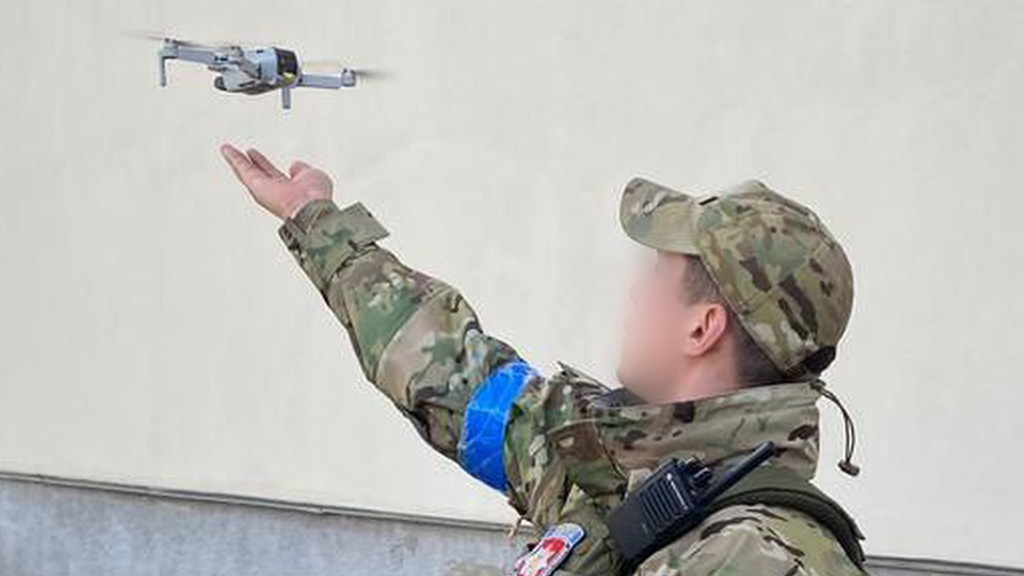
- Published27 April 2022
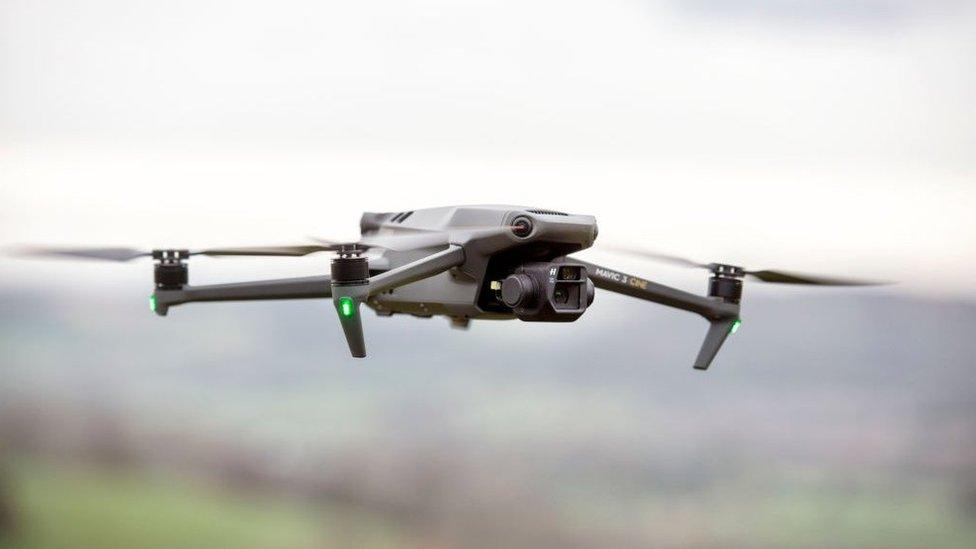
- Published27 March 2022
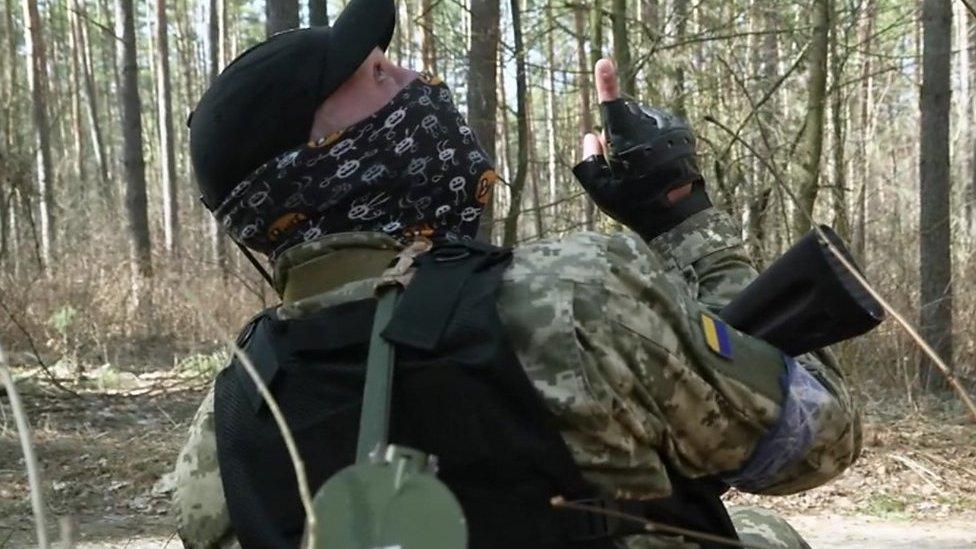
- Published7 July 2022
